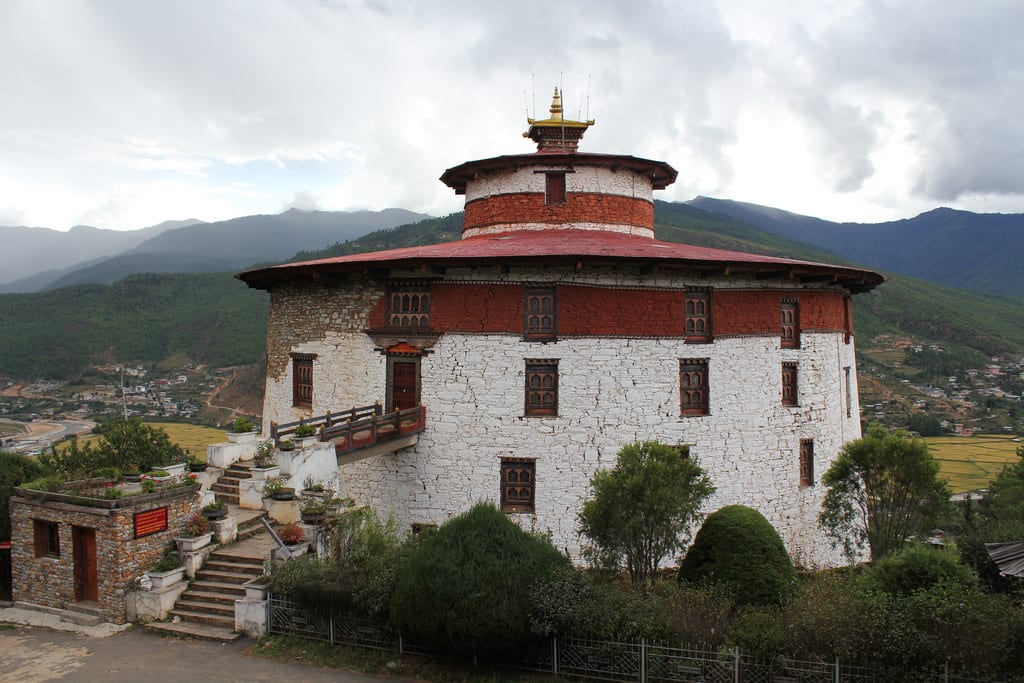Travel Abroad
NATIONAL MUSEUM OF BHUTAN- ‘Ta Dzong’,Paro.

Now called the National Museum of Bhutan above Paro Dzong is its ‘ta dzong’ (watchtower), built in 1649 to protect the undefended dzong and renovated in 1968 to house the National Museum. The unusual round building is said to be in the shape of a conch shell, with 2.5m-thick walls. The ta dzong suffered damage in the 2011 earthquake but is due to reopen in 2016 as the nation’s premier museum. Until then a sample of the exhibits are currently on display in an adjacent annexe.
Displays include an impressive collection of ‘thangkas’, both ancient and modern, depicting Bhutan’s important saints and teachers, as well as fearsome festival masks grouped according to their tsechu dances. There’s a natural-history gallery with a 3D map of Bhutan, while the Heritage Gallery contains such oddities as an egg laid by a mule and a horse horn attributed to Guru Rinpoche, plus a few original iron links from the iron bridge at Tamchhog. An underground tunnel is said to lead from the watchtower to the water supply below.
Cameras are not allowed inside the museum, but you can photograph the ‘ta dzong’ and surrounding grounds. The museum closes an hour earlier in winter (November to February).
Driving to the museum involves a 4km loop into the Dop Shari valley. After visiting, you can walk down a path from the museum to the dzong and back to the town, enjoying good views of the valley and of the Ugyen Pelri Palace. Alternatively, you can start the excellent hike to Zuri Dzong from just about the museum.
The Museum has got every detail scripted on their god’s and ancestors with a display of traditional attire followed by display of various inhabitants.
The National Museum performs an essential role as a preserver and promoter of Bhutanese cultural values. Preserving culture and cultural values is one of the Nine Domains of Gross National Happiness, the Bhutanese philosophy for national development.
The Nine Domains are:
- Psychological Well-being
- Ecological diversity and Resislience
- Health
- Education
- Culture
- Living Standard
- Time use and balance
- Community Vitality
- Good Governance

































